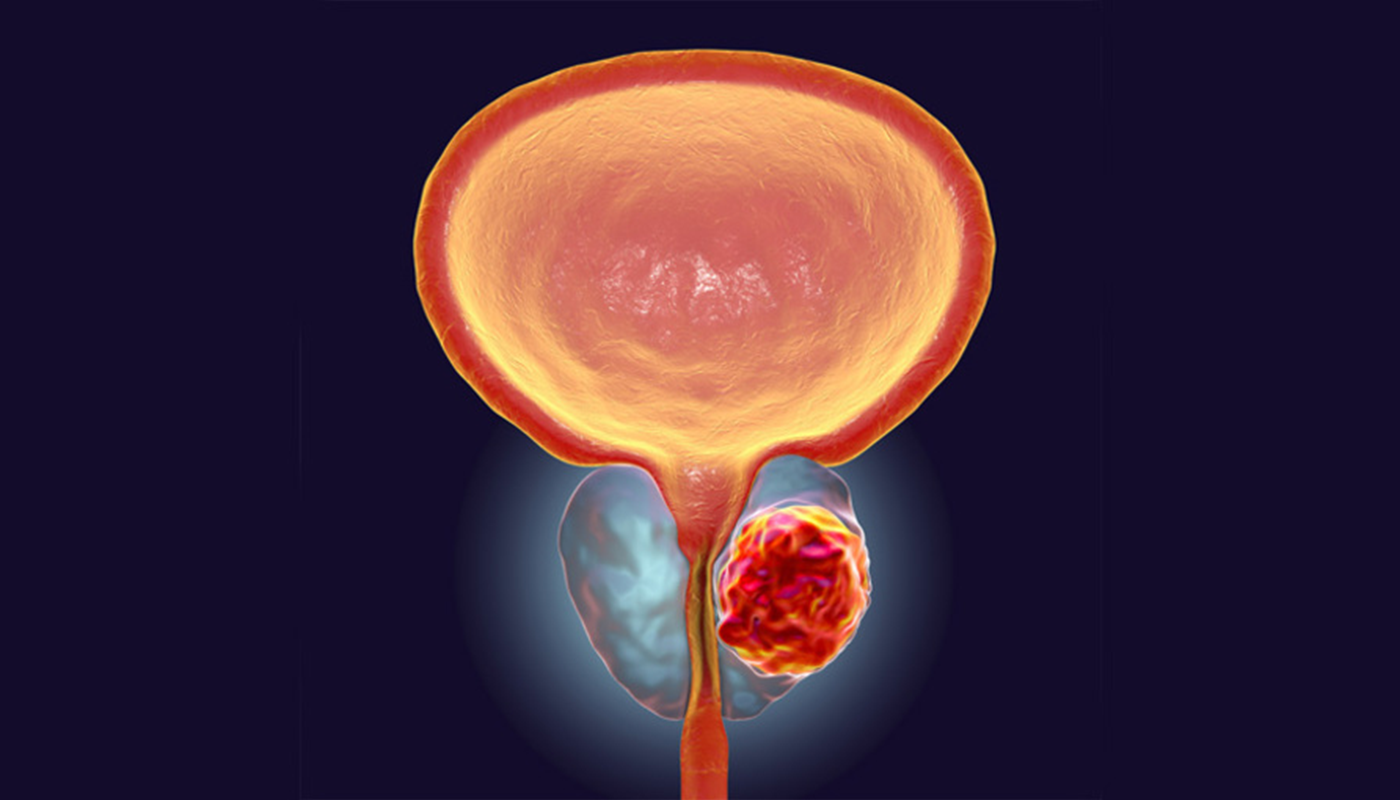Prostate Cancer

What is Prostate Cancer?
The prostate is a walnut-sized organ that comes after the bladder in the male urinary tract and continues with the external urinary tract (urethra). It is a gland that contributes to the formation of semen (semen or ejaculate). The growth of the prostate depends on the male hormone Testosterone. The sources of Testosterone in our body are largely the testicles and adrenal glands.
Prostate cancer is a malignant tumor of the prostate. Prostate cancer is a very common cancer. According to World Health Organization data, prostate cancer is the most frequently diagnosed male cancer worldwide and is reported as the second most common cause of death. Considering Türkiye’s data, its incidence is 43/100,000 and detection rates are similar to European averages.
What are the symptoms of Prostate Cancer?
Prostate cancer is common in men over the age of 50. This frequency increases with age. Prostate cancer is not a homogeneous cancer, and while it does not cause any lifelong problems in some patients, it can progress rapidly and lead to death in others. Although it generally does not cause any complaints in patients, the most common reason for our patients’ presentation is findings similar to benign prostatic hyperplasia (difficulty urinating, urinating at night, etc.).
When our patients apply to us, we can also detect that their cancer has spread outside the prostate, to the lymph nodes, and to the bone through the blood. If it spreads to the bone, they may consult a doctor with widespread hip and lower back pain.
What are the Risks and Causes of Prostate Cancer?
There are three known definitive risk factors for prostate cancer. These are: advanced age (over 60 years of age), familial inheritance and ethnicity. The average age at detection of prostate cancer in the world is 68. Its incidence increases with age. Familial inheritance is very important. Studies have shown that the risk of cancer increases 2.5 times in people who have prostate cancer in one of their first-degree relatives (father or brother).
It has also been shown that those with relatives with prostate cancer have this disease at an earlier age. It is now clearly seen that those who have close relatives with prostate cancer have a higher risk of developing prostate cancer at an earlier age.
How is Prostate Cancer Diagnosed?
As the incidence of prostate cancer increases over the years, it is recommended that men after the age of 45 be examined by urologists. For those whose relatives have prostate cancer, it is very important to follow them up from the age of 40 onwards for early diagnosis and treatment.
Urine analysis, Prostate Specific antigen (PSA), and digital rectal prostate examination are the first things to be done to diagnose prostate cancer. Since the PSA test is a marker specific to the prostate, not the disease, it can be increased in infections and benign growths of the prostate, as well as prostate cancer. Additionally, normal values vary depending on age and prostate size.
Therefore, interpretation of the PSA test alone is not sufficient. Prostate examination and, if necessary, rectal ultrasound provide important information in diagnosis. If there is a suspicious situation as a result of these examinations, tissue sampling (biopsy) from the prostate must be performed.
What are the Treatment Methods for Prostate Cancer?
Patients are treated according to the extent of the cancer and its aggressiveness in tissue examination.
Active surveillance: Prostate cancer may progress more benignly in some patients, and cancer-related death does not occur even if they do not receive treatment. For this reason, although some patients are diagnosed, there is no need for treatment. “Active Monitoring” can be applied, especially to those who are older and have many internal diseases, considering that the possible side effects of the treatment may cause more harm than benefit. In this case, patients can be checked at regular intervals and treatment can be given according to the findings.
Surgery: Although there are many treatment options for cancer limited to the prostate, surgical removal of the prostate (radical prostatectomy) is considered the gold standard treatment method. Although this method is performed as an open surgery, it can also be performed laparoscopically and robot-assisted, thanks to technological developments in the last 10 years. Studies show that in the hands of experienced surgeons, the robot provides cancer control similar to open surgery.
In this surgery, the prostate gland is completely removed from between the urinary bladder and the external urinary tract, and the urinary bladder is connected to the external urinary tract with the help of stitches. At the same time, in patients with a possibility of cancer spreading to the lymph nodes, the lymph nodes in the lower abdomen are removed for both staging purposes and, although not definitively, for treatment purposes.
After radical prostatectomy, it is necessary to ensure both cancer control and the continuation of urinary continence and sexual functions. However, the continuation of urinary retention and sexual functions is related to the patient’s age, pre-surgical functions and the technique during surgery. In all three radical prostatectomy methods (open, laparoscopic and robot-assisted), preservation of the nerves that control erection contributes to postoperative sexual functions and urinary retention in suitable patients.
From these perspectives, robot-assisted surgery provides slightly better results than open and laparoscopic surgeries. Robot-assisted surgery also has early return to work and cosmetic advantages. However, it should be kept in mind that in order to provide a successful treatment to the patient, experience, not technology, is important, and whichever method the surgeon is successful in should be preferred.

